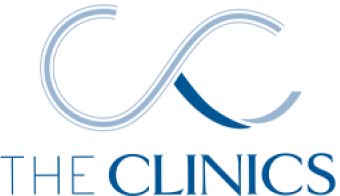
Tummy Tuck
A tummy tuck is plastic surgery designed to restore the abdomen, both functionally and visually, following weight loss, pregnancy, aging or other reasons.

What is a Tummy Tuck?
A tummy tuck is plastic surgery designed to restore the abdomen, both functionally and visually, following weight loss, pregnancy, aging or other reasons. The medical term is “abdominoplasty” and patients have several options to choose from.
Abdominoplasty and tightening with Vaser/J-Plasma: Best for small fat deposits and moderate skin laxity. Vaser liposuction is used to extract fat from the abdomen in combination with J-Plasma for skin tightening. J-Plasma emits cold plasma energy, helium plasma and radiofrequency to cool the tissue under the skin to achieve a more contoured appearance.
Full tummy tuck: Complete surgical tummy tuck where the surgeon makes an incision across the lower abdomen to remove excess skin and fat. The full tummy tuck is ideal for people with significant sagging and weak abdominal muscles.The surgeon may repair separated abdominal muscles known as diastasis recti.
Mini tummy tuck: A less extensive surgery that targets the lower abdomen only. The mini is best for individuals with sagging skin and good muscle tone as it usually involves a smaller incision and less or no muscle repair.
Abdominal sculpting: The plastic surgeon reshapes and sculpts the patient’s abdomen to achieve an athletic “six-pack” appearance. The surgery is performed using a VASER liposuction under full anesthesia in an operating room equipped for the procedure.
Girdle tightening: Also known as 360 liposuction, this procedure creates an “hourglass” figure by removing excess fat and skin around the abdomen, back and flanks. Similar to abdominal sculpting, it’s performed under full anesthesia.
Why Have a Tummy Tuck?
Significant weight loss, multiple pregnancies and skin laxity due to aging cannot be reversed with diet and exercise alone. Surgery is often required to remove excess skin and fat, tighten weak muscles, and contour the body for a more shapely and attractive appearance.
FAQ’s
Will a tummy tuck remove stretch marks?
If your stretch marks are located below the abdomen then a tummy tuck can help address them.
What are the complications of a tummy tuck?
Like with any surgery, a tummy tuck may result in complications such as infection, bleeding, scarring and reaction to the anesthesia. It’s also possible to be dissatisfied with the results or body shape. For this reason it’s very important to choose a qualified and experienced surgeon.
We invite you to book a consultation with one of our expert plastic surgeons to find out if a tummy tuck is right for you.

Tummy Tuck Quick Facts:
| Cost of Tummy Tuck | TBD |
|---|---|
| Duration of Surgery | 1-4 hours |
| Hospital Stay Required? | Yes, up to 24 hours |
| Stitches Removed | 5-7 days |
| Days of Social Downtime | 2-4 weeks |

After Surgery:
Downtime and recovery: Each person experiences the recovery period differently. Your unique healing journey will be based on your specific type of surgery. Below are some general guidelines for what you can expect:
1 Day Post-Op: Depending on your procedure, you may need to spend up to 24 hours under observation in the recovery room. You will experience the most pain, discomfort, and swelling in the first few days after surgery. You will be prescribed pain medication to keep you comfortable. You will wake up from the anesthesia wearing a compression garment to minimize swelling and edema.
1 Week Post-Op: Adequate rest and wound care are crucial for the first week. Make sure to keep the incisions clean and dry. If you have drains in place, your surgeon will instruct you how to care for them properly. Avoid strenuous physical activity, bending over, lifting heavy objects or anything that can cause your stitches to come apart.
2-6 Weeks Post-Op: Swelling and bruising will subside and you may perform light activity such as walking. Avoid strenuous exercise until your surgeon clears you. Maintain a healthy diet to promote a faster recovery. You may want to begin scar management products such as creams or silicone sheets at this time.
Long-term recovery: Make sure to attend all your follow up appointments as required. Most swelling should be resolved after 2-3 months. Continue with scar management until they have properly healed, which can take up to 12-18 months.
What to Expect Before Surgery:
Follow pre-operative instructions: You will be provided with detailed pre-operative instructions by your surgeon. These may include avoiding medications that promote bleeding, making sure you have all the medications you’ll need post-operatively and when to stop eating and drinking the night before.
Arrange for help: You will need someone to pick you up from the clinic or hospital and take you home. You will need help with basic tasks such as taking medications, bathing, getting dressed, getting on/off the bed and using the bathroom.
Plan for your recovery: Downtime varies from person to person. It may take several weeks before you can comfortably carry out regular household tasks or get back to work. Make sure to take adequate time off and designate a safe, comfortable space for your recovery.
How to Prepare for a Tummy Tuck

Do your research
A consultation and medical evaluation with a qualified Plastic Surgeon is the first step in preparing for a tummy tuck. During your initial meeting you can learn more about the procedure, discuss your treatment objectives and options, as well as potential complications.

Quit smoking
If you’re a smoker it’s best to quit smoking at least six weeks in advance. Nicotine and other chemicals in tobacco can constrict blood vessels and impair your body’s ability to heal adequately post surgery.

Make necessary lifestyle changes
In the months and weeks leading up to your surgery, prepare yourself mentally and physically. This includes maintaining a healthy diet and body weight, and avoiding certain medications/substances that can slow your healing process.
ELEGIBILITY The Ideal Candidate for Tummy Tuck
The ideal candidate is someone with sagging skin and excess fat in the abdomen area that doesn’t respond to positive lifestyle changes. Here are some other factors to consider:
Good overall health: A person should be in excellent health and a non-smoker. This includes having no serious physical conditions that could affect the outcome or be a contraindication to surgery and general anesthesia.
Be at a stable weight: Since fluctuations in weight can affect the results of a tummy tuck, an ideal candidate should be at a stable weight before undergoing the procedure.
Finished having children: It’s best to finish having your family before undergoing this type of surgery as weight gain and skin stretching during pregnancy can impact the results.
Have realistic expectations: A tummy tuck can help restore a slimmer, more athletic shape and abdominal contour. It’s not a weight loss tool, however, and despite the surgeon’s best efforts it’s not always possible to regain the same body you had before pregnancy or weight changes.
Be committed to recovery: A full recovery from a tummy tuck can take several weeks to several months. An ideal candidate should be physically and psychologically prepared to deal with the lengthy healing process and to diligently follow all the post-care instructions.




